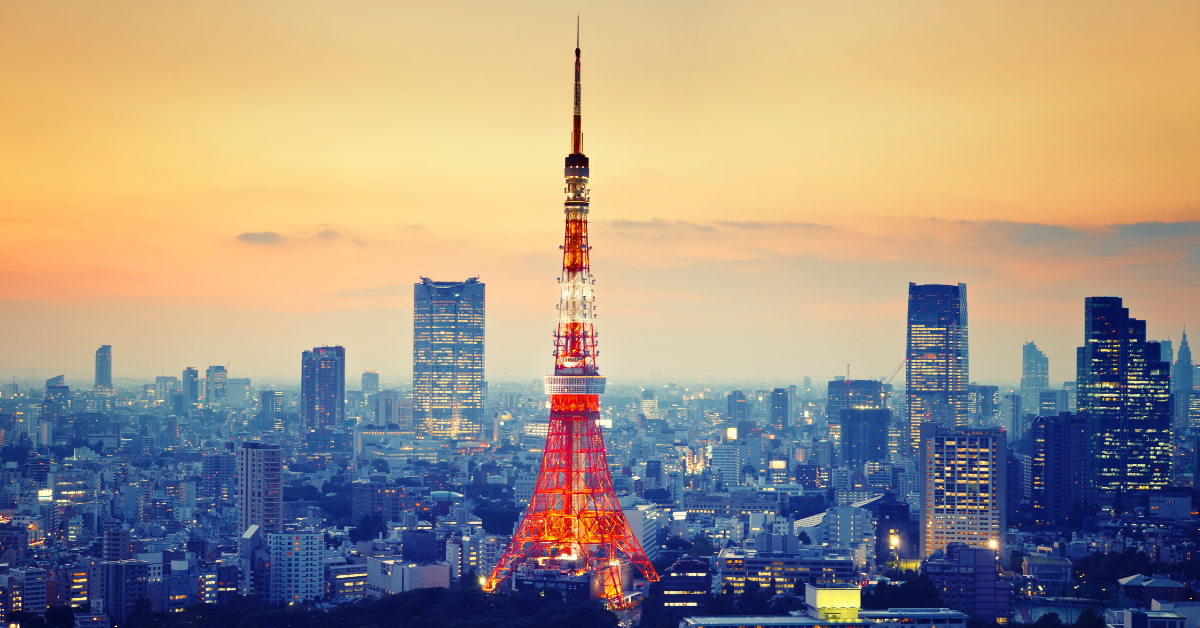Tokyo Tower is more than just a broadcasting structure in the heart of Tokyo. For Japanese people, it is a symbol of postwar recovery, national pride, and cherished memories. Today, while Tokyo Skytree may represent modern innovation, Tokyo Tower continues to be a beloved landmark that blends history with emotional value.
The Position of Tokyo Tower for Japanese People
Tokyo Tower was built as a symbol of Japan’s period of high economic growth. During the postwar recovery, the Japanese people needed a beacon of hope for the future. Rising tall in such an era, Tokyo Tower was accepted not just as a broadcasting tower but as “a mirror reflecting Japan’s rebirth and growth.”
At the time, it was praised as “the tallest tower in the East” and drew international attention, stirring strong feelings of pride among the Japanese people. For many families, visiting Tokyo Tower became a tradition during school trips and family vacations. It was so beloved that people would say, “If you go to Tokyo, you must visit Tokyo Tower.”
Here is how Japanese people see Tokyo Tower across different eras:
| Era | Symbolic meaning for Japanese people |
|---|---|
| Showa Period | A symbol of postwar recovery and rapid economic growth, embodying hope for the future |
| Heisei Period | A classic sightseeing spot, a place for family trips and school memories |
| Reiwa Period | A nostalgic yet familiar landmark, standing alongside Skytree as a symbol of Tokyo |
Popularity as a Tourist Destination
Tokyo Tower continues to be a highly rated tourist attraction among Japanese people. During the day, visitors can enjoy sweeping views of the Tokyo skyline, and on clear days, even Mt. Fuji can be seen. This experience is often described as a “quintessential Tokyo moment.”
At night, the illuminated tower creates a romantic atmosphere above the city. Among Japanese people, the “beauty of its lighting” is often highlighted, and it is chosen as a setting for birthdays, anniversaries, and even marriage proposals.
Evaluations of Tokyo Tower’s night illumination can be summarized as follows:
| Point of evaluation | Japanese impressions |
|---|---|
| Beauty | Seasonal and event-based color changes are enjoyable |
| Special feeling | A romantic spot for anniversaries and special moments |
| Familiarity | Loved across generations as a nightscape that embodies “Tokyo” |
Key Features of Japanese Evaluations
Japanese evaluations of Tokyo Tower can be categorized into the following perspectives:
| Perspective | Japanese evaluations |
|---|---|
| Historical value | Remembered with pride as a symbol of Japan’s rapid economic growth |
| Tourist attraction | Popular for its observation decks and lighting events, with creative visitor appeal |
| Emotional value | Seen as “a landmark of the heart”, evoking nostalgia and familiarity |
| Comparative view | Though surpassed by Skytree in function, still highly valued as the true “face of Tokyo” |
From this, it is clear that Japanese people view Tokyo Tower as “a bridge between past and present.”
Differences from the Foreign Perspective
For foreign visitors, Tokyo Tower is often recognized simply as “an iconic structure symbolizing Tokyo.” For Japanese people, however, it carries deep emotional weight and personal memories.
For example, for the Showa generation, Tokyo Tower represented “their first impression of Tokyo” during school trips. For later generations, it became a landmark often seen in movies or dramas. When they finally visit in person, the reaction is often, “It looks just like in the films.”
This contrast can be summarized as follows:
| Perspective | Japanese evaluations | Foreign visitors’ evaluations |
|---|---|---|
| Emotional context | Family trip memories, school excursions, youth symbol | Recognized as a famous sightseeing attraction |
| Cultural influence | Strongly associated with films, anime, and pop culture | Viewed as a must-visit landmark in Tokyo |
| Value of experience | A place that combines both “nostalgia” and “warmth” | A “bucket-list” destination for many travelers |
Tokyo Tower as a Cultural Symbol
Tokyo Tower frequently appears in films, dramas, and anime, embedding it deeply into Japanese culture. Famous works such as Godzilla and Doraemon repeatedly featured the tower, etching it into the nation’s collective memory. This cultural significance further strengthens Japanese people’s evaluations.
In addition, Tokyo Tower provided postwar Japan with a sense of hope. Its towering presence symbolized that “if you work hard, the future will be bright.” Thus, for many Japanese, Tokyo Tower is not only a sightseeing attraction but also a symbol of resilience and progress.
Conclusion
For Japanese people, Tokyo Tower is both “a monument to past glory” and “a beloved sightseeing spot” today. While generational perspectives may differ, the themes of pride, nostalgia, and affection are constant.
For foreign visitors, experiencing Tokyo Tower offers insight into how Japanese people value history and culture and how they pass those values on to future generations. If Tokyo Skytree represents cutting-edge technology, Tokyo Tower represents the soul of the Japanese people. Visiting both allows travelers to experience Japan’s past and present in one journey.






